Jul 19, 2023
Products
Seismic Isolation: An Inside Look at the Development, Structure, and Applications
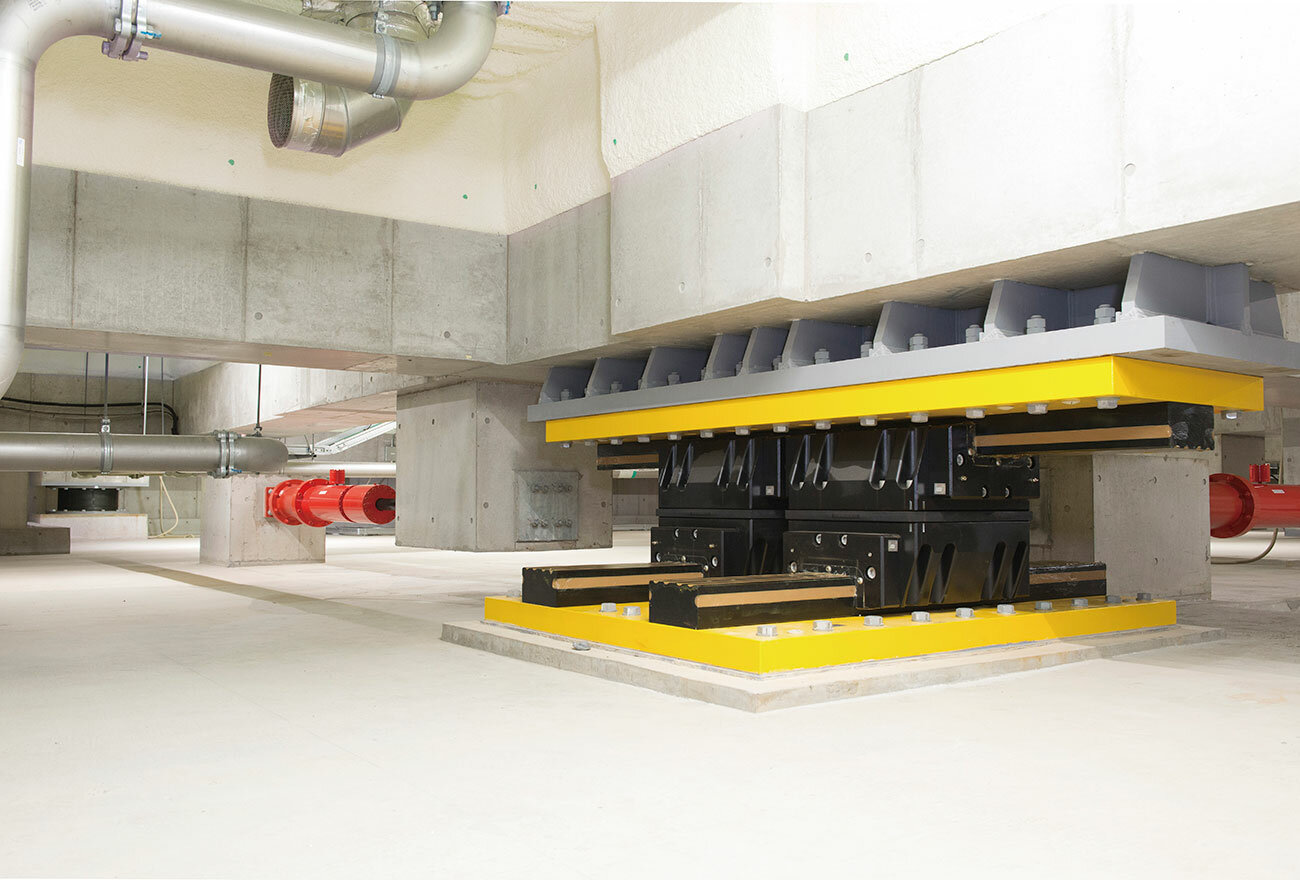
Seismic isolation structures hinder the transmission of ground movement to buildings. They have become an increasingly common feature of earthquake-resistant office buildings and high-rise apartments, and they are gradually becoming a part of daily life. Let's take a look at how THK's linear motion guide technology, which uses a rolling guide mechanism, came to be adopted in seismic isolation technology and how it is being used to provide seismic isolation for buildings and equipment.
THK's Seismic Isolation Technology Journey
Guided by the concept of “developing technology to realize creative living spaces for greater comfort,” the machine component manufacturer THK established the ACE (Amenity Creation Engineering) Division at the end of 2001. Out of a strong desire to expand linear motion guides to a variety of fields and industries, this division aimed to develop and promote the use of seismic isolation technology.
THK's development of seismic isolation technology began even before the ACE Division was established, springing from a conversation with a general contractor about the possibility of using low-friction rolling guides in seismic isolation systems. As a result of experiencing the Great Hanshin Earthquake in 1995 just as the prospect of development was looking brighter, the dedicated team that preceded the ACE Division was organized and accelerated its efforts to get involved in the seismic isolation industry in earnest. Development did not go smoothly, however, as they were unsure if using an unmodified linear motion guide would really achieve seismic isolation, and they struggled with how to develop a product for construction use.
The first time this seismic isolation technology was adopted was for a building. At the time, laminated rubber was the mainstream seismic isolation solution for buildings. However, the linear motion guide, a machine component, was chosen as the secret ingredient to further reduce earthquake tremors and achieve greater seismic isolation performance.
The seismic isolation effect of laminated rubber was limited to 10 floors at the most. As THK moved forward with the development of its seismic isolation system, it challenged itself with a bold question: Why can't seismic isolation be available for 20-story buildings? THK's seismic isolation system is a technology that deflects earthquake tremors by using two LM Guide units arranged in a cross formation to move in all directions based on seismic activity. If rolling technology is employed successfully to reduce friction, it will also be effective for use in various types of seismically isolated buildings. Nowadays, this seismic isolation technology is utilized in applications ranging from single-family homes to pieces of equipment.
Excluding single-family homes, Japan currently has 4,000 buildings with seismic isolation. The effectiveness of seismic isolation has been verified during actual earthquakes, and that has also spurred the proliferation of seismically isolated buildings. It has been confirmed that seismic isolation structures reduced the damage caused by the Great Hanshin-Awaji Earthquake (1995), Great East Japan Earthquake (2011), and Kumamoto Earthquakes (2016). Hospitals that adopted seismic isolation have been able to resume treatment even directly after earthquakes. Local governments and corporations have increasingly been looking into seismic isolation as part of their BCP measures due to the technology's ability to maintain the safety and function of buildings.
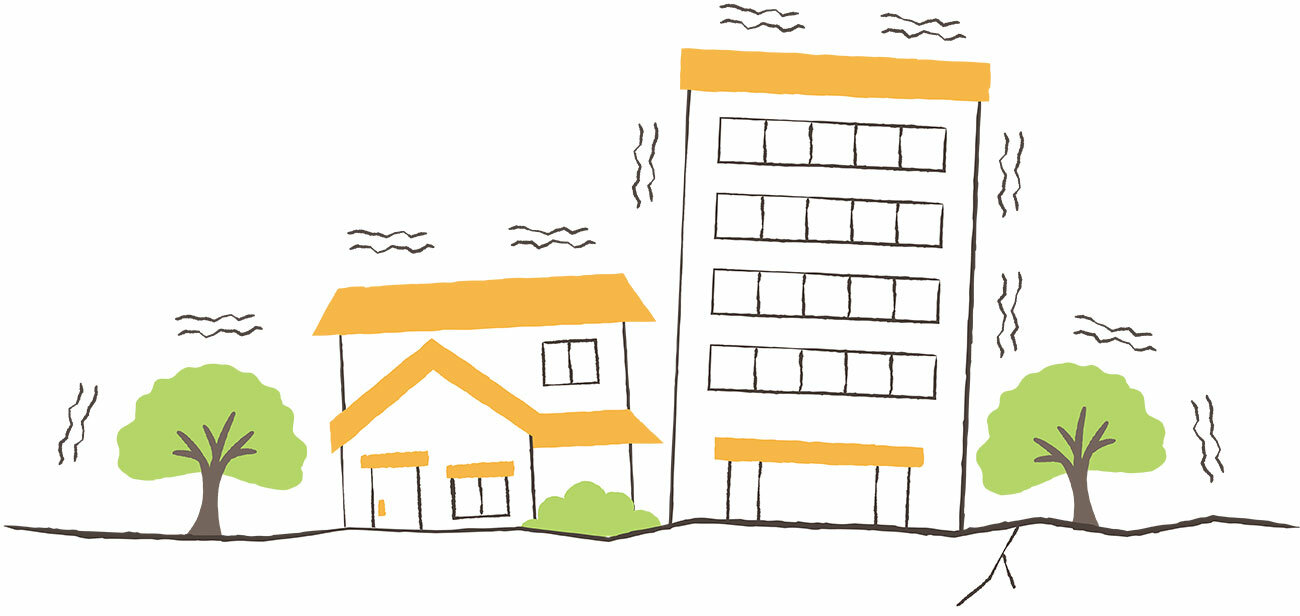
THK's Seismic Isolation for Equipment Demonstrates the Ultimate Seismic Isolation Performance
Core Component Is LM Guide Used in Industrial Machinery Worldwide
Forming the heart of the seismic isolation module, the LM Guide uses rolling motion to achieve linear motion while reducing frictional resistance to generate smooth movement that deflects seismic tremors. Since its development by THK in 1972, the LM Guide has spurred dramatic improvements in the performance of mechatronic equipment, and it is now the de facto standard for industrial equipment and machine tools around the world.
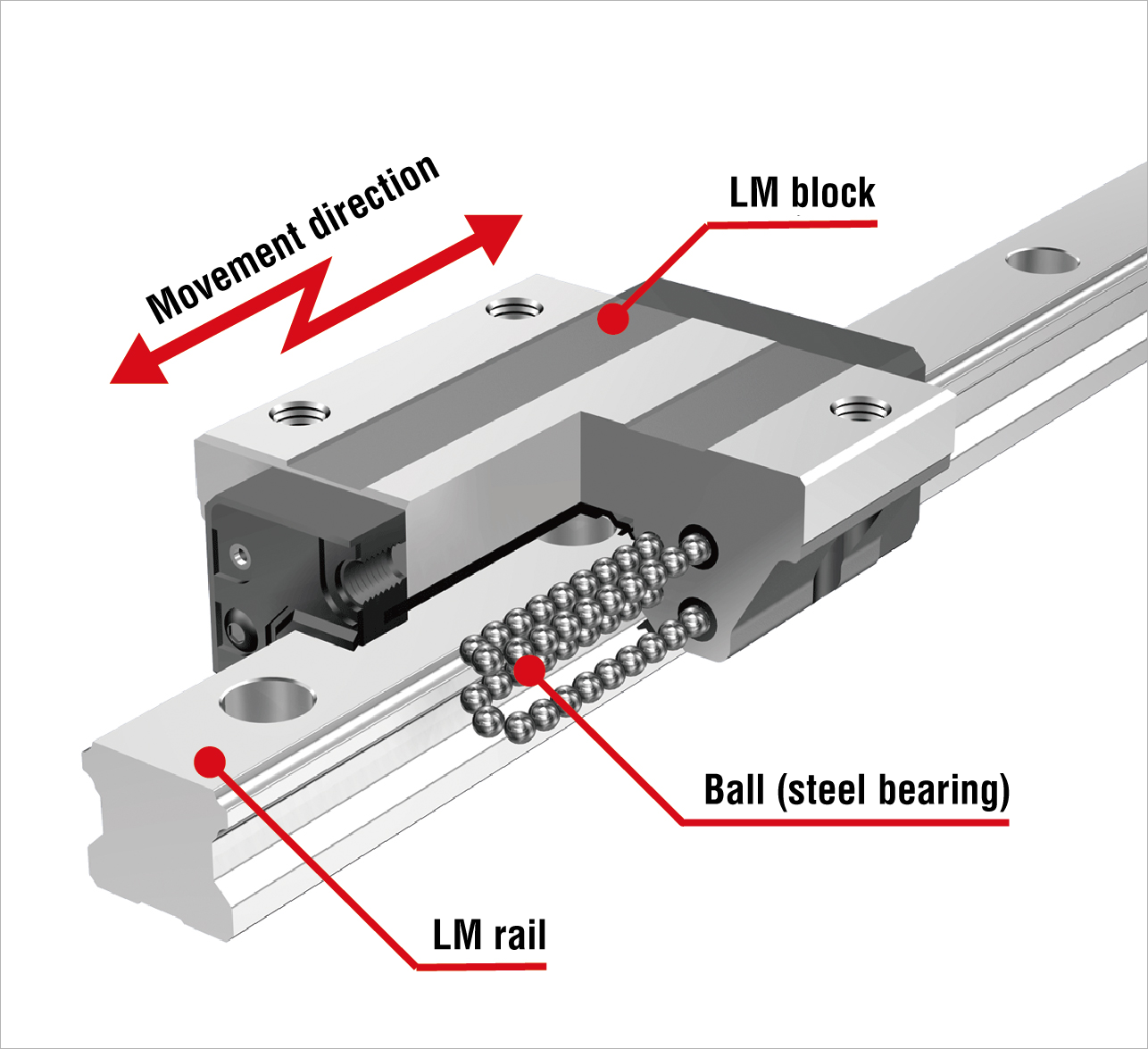
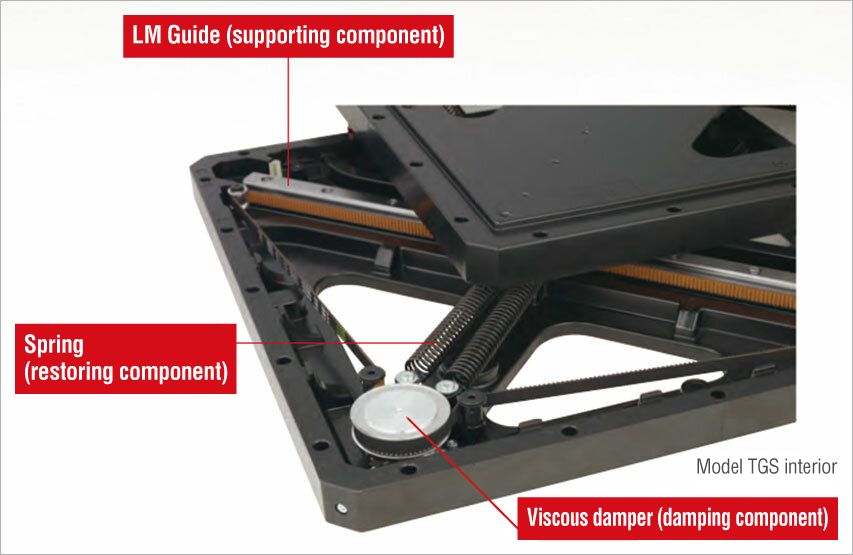
The Seismic Isolation Module Model TGS condenses the supporting, restoring, and damping functions essential to seismic isolation into a compact form.
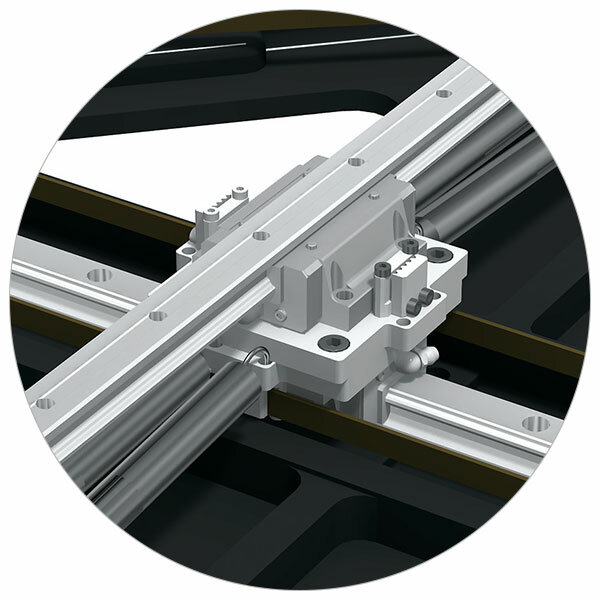
Structure and Features of Seismic Isolation for Buildings
What does it mean to seismically isolate a building? What is the difference between seismic isolation, seismic damping, and earthquake-proofing?
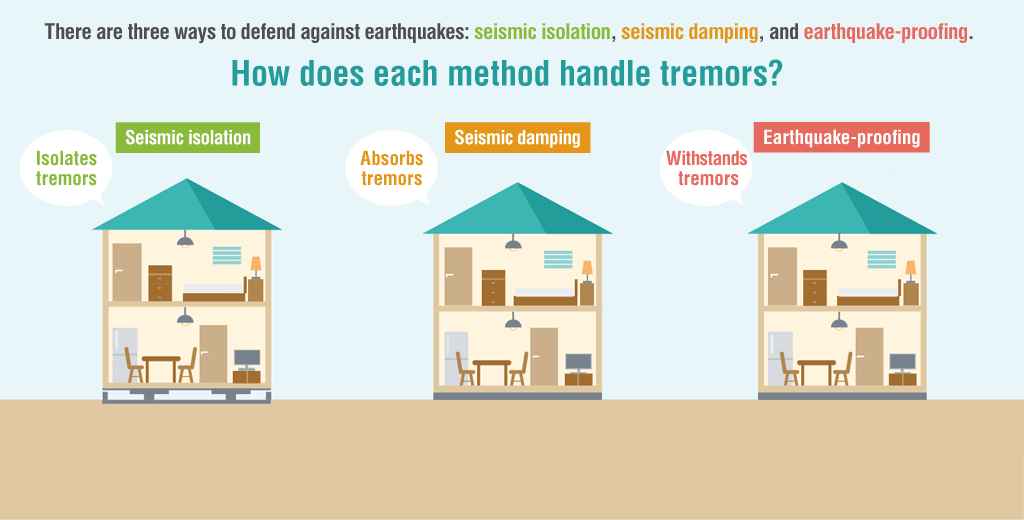
Seismic isolation deflecting tremors
Installing a seismic isolation system between a building and its foundation prevents seismic tremors from being directly transferred to the building by providing isolation from the ground.
Seismic isolation system
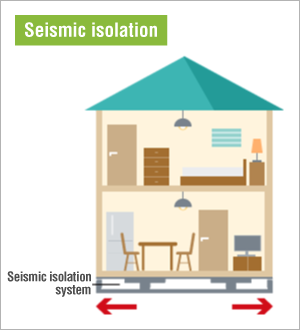
Seismic damping absorbing tremors
Buildings with these structures absorb earthquake tremors via built-in seismic damping materials such as weights and dampers. (This is a highly effective technology for skyscrapers and other tall buildings, where shaking becomes more intense the higher the floor.)
Seismic damping system
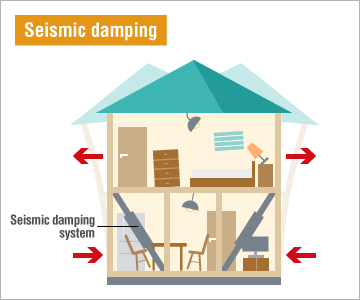
Earthquake-proofing withstanding tremors
Many homes in earthquake-prone regions have earthquake-proof structures strong enough to withstand tremors to the extent that the building doesn’t collapse and the residents can evacuate.
Brace
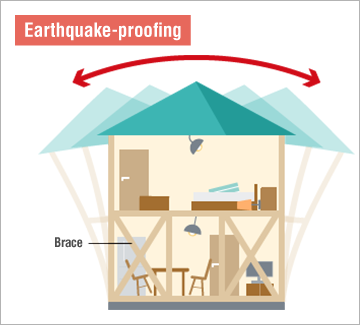
Comparison of Seismic Isolation, Seismic Damping, and Earthquake-Proofing
The table below shows how earthquake-proofing, seismic damping, and seismic isolation compare with one another, and the difference that having a seismic isolation system makes on an indoor environment during a large-scale earthquake.
| Seismic isolation | Seismic damping | Earthquake-proofing | |
|---|---|---|---|
| Likelihood of furniture falling over | Low | High | High |
| Likelihood of tableware and glasses shattering | Low | High |
High |
| Likelihood of appliances falling over or being damaged | Low | High | High |
| Likelihood of structural damage | Extremely low | Low | High |
| How tremors are handled | Ground tremors are not transferred directly, so the building shakes less than the ground. | Upper-story shaking is less than with earthquake-proofing, but it does not shake less than the ground does. | Each floor of the building shakes more than the one below. |
Seismic Isolation Technology Expanding from Buildings to Equipment
What does it mean to provide location-specific protection through seismic isolation systems for equipment?
Seismic isolation systems can also be installed in specific locations to protect tremor-sensitive assets such as servers, works of art, and medical devices from earthquakes.
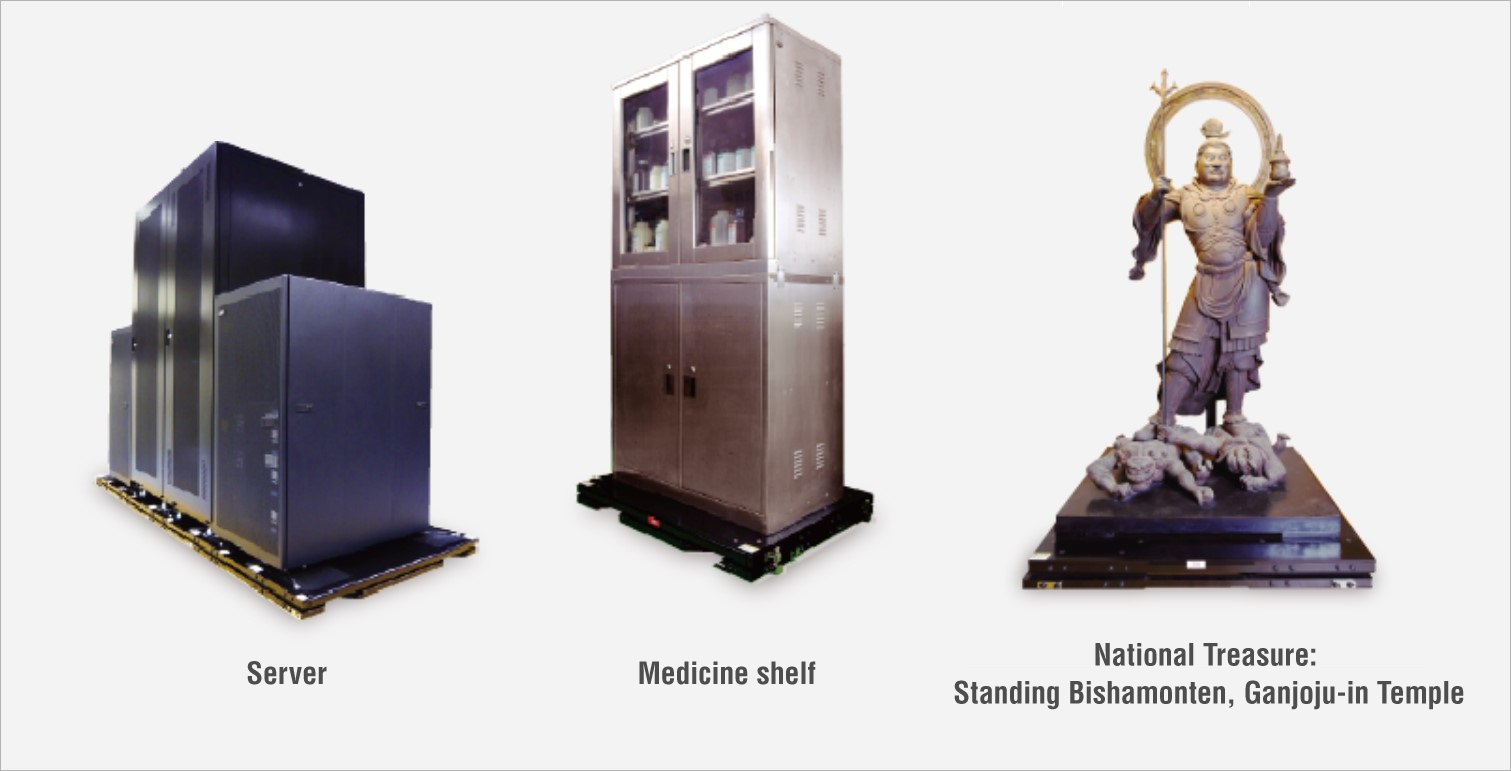
Protecting Equipment
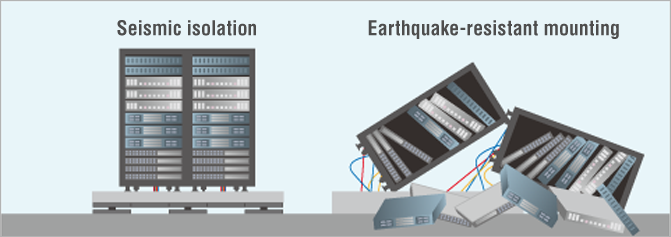
Protecting Works of Art, Societal Assets, Servers, and Equipment from Earthquake Damage by Isolating Them from Floors
Seismic isolation systems for equipment separate devices and works of art from floors to reduce the transmission of violent seismic tremors. This is an ideal way to protect societal assets such as cultural artifacts and artwork in addition to important equipment and devices. Compared to seismic isolation for buildings, this much cheaper option is quick and simple to install.
Seismically Isolating an Entire Floor
The diagram below shows how seismic isolation compares against earthquake-resistant mounting and the difference that having a seismic isolation system makes on an indoor environment during a large-scale earthquake.


Perpendicular LM Guide units provide smooth movement in every direction for a range of 360°.
THK will continue to utilize its LM Guide technology to provide seismic isolation systems that will contribute to the creation of a society that is safe and resilient against disasters.
* This content is based on information that was released in Japanese on July 19, 2023.